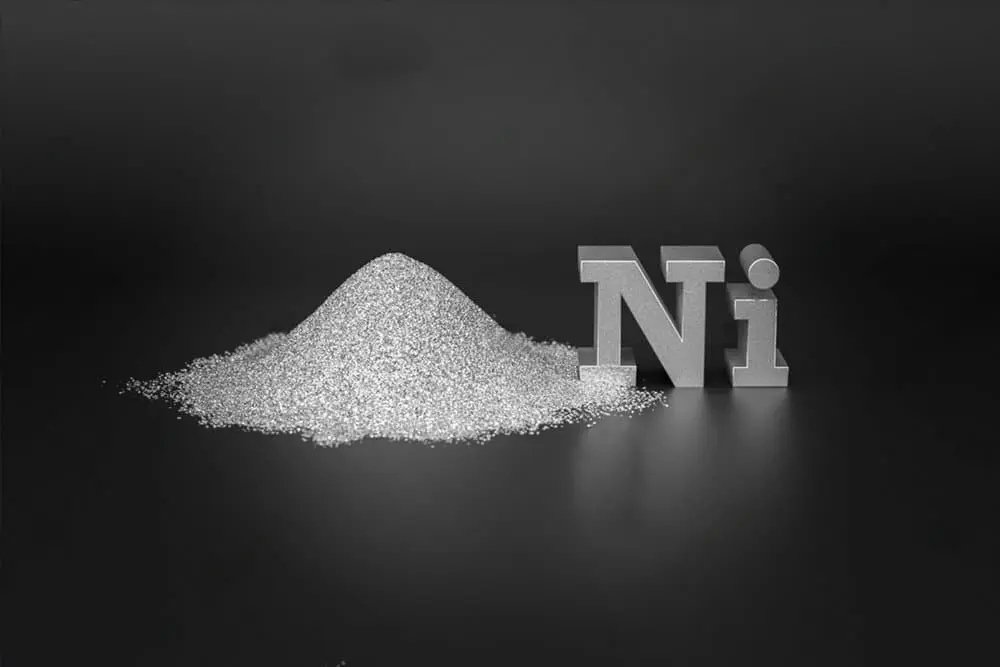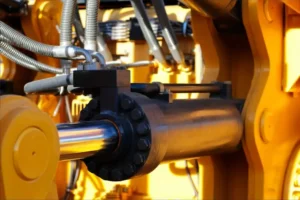إن إضافة النيكل أثناء عملية ذوبان الحديد يعزز بشكل كبير خصائص المواد القائمة على الحديد لتلبية متطلبات التطبيق المحددة.
كعنصر حاسم في صناعة السبائك, يلعب النيكل دورًا حيويًا في تحسين الأداء المادي, تحسين خصائص المعالجة, وصقل البنية المجهرية للحديد الزهر.

1. تعزيز أداء المواد
- زيادة القوة والصلابة
يقوم النيكل بتحسين بنية الحبوب ويقلل من عيوب حدود الحبوب, يعزز بشكل كبير من قوة وصباقة السبائك القائمة على الحديد. هذا التعديل مفيد بشكل خاص في البيئات التي تتطلب مقاومة التأثير والمتانة الميكانيكية, مثل الآلات الثقيلة والمكونات الهيكلية الكبيرة.
- تحسين مقاومة التآكل
يعزز النيكل بشكل كبير مقاومة التآكل للمواد القائمة على الحديد, جعلها أكثر استقرارًا في الرطبة, عدوانية كيميائيا, أو بيئات درجات الحرارة العالية. هذه الخاصية أمر بالغ الأهمية بالنسبة للفولاذ المقاوم للصدأ, الذي يستخدم على نطاق واسع في البناء, السيارات, وتطبيقات أدوات المطبخ.
- محسّنة مقاومة التآكل
يعرض الحديد الزهر الذي يحتوي على النيكل خصائص تصلب العمل أثناء الاستخدام, مزيد من تحسين مقاومة التآكل. هذا يجعلها مناسبة للتطبيقات عالية الارتداد مثل المكونات الميكانيكية والمحرك.
- ليونة محسنة
يزيد النيكل من ليونة المواد القائمة على الحديد, السماح لهم بالخضوع تشوهًا أكبر قبل التكسير. هذا ضروري للمنتجات التي تتطلب المرونة والقدرة على التكوين.
2. تحسين خصائص المعالجة
- انخفاض نقطة الانصهار
النيكل يقلل من نقطة انصهار الحديد, تحسين سيولة المعادن المنصهرة. هذا لا يعزز أداء الصب فحسب ، بل يقلل أيضًا من العيوب مثل مسامية الغاز والضوائر, مما يؤدي إلى المسبوكات عالية الجودة.
- تحسين القابلية للآلات
إن وجود النيكل يسهل قطع وتشكيل المواد بشكل أفضل, تسهيل معالجة وخفض تكاليف التصنيع.
3. تحسين البنية المجهرية من الحديد الزهر
- الجرافيت تأثير
يعمل النيكل كوكيل جرافيت, تعزيز انتقال المرحلة المستقرة للحديد المنصهر. هذا ينتج عنه بنية مجهرية موحدة وكثيفة, وهو أمر ضروري للسباق عالي الأداء.
- الاستقرار أوستنيت مرحلة
يوسع النيكل منطقة مرحلة أوستنيت ويعزز استقرارها. هذا يساعد على تكوين بنية مجهرية مستقرة أثناء التبريد ويحسن مقاومة المادة للتشوه في درجات حرارة عالية.
- تحسين القابلية
النيكل يحسن بشكل كبير من صلابة الحديد الزهر, تمكين تشكيل الهياكل المجهرية. هذا يزيد من قوة وصلابة المادة.
4. التطبيقات
- صناعة البتروكيماويات
تستخدم سبائك النيكل على نطاق واسع لتصنيع خطوط أنابيب مقاومة للتآكل, المفاعلات, وغيرها من المعدات.
- تصنيع السيارات
الحديد الزهر النيكل مثالي للمكونات عالية القوة والمقاومة للارتداء, مثل أجزاء المحرك.
- المعدات الكهربائية والطاقة
يستخدم الحديد الزهر لسبائك النيكل لإنتاج شفرات التوربينات ومكونات المولدات, بفضل أدائها الممتاز في درجات الحرارة العالية.
- الفولاذ المقاوم للصدأ والسبائك الخاصة
سبيكة تحتوي على النيكل ضرورية لخزانات التخزين منخفضة درجات الحرارة, المبادلات الحرارية, وغيرها من المعدات, الاستفادة من استقرار النيكل في ظل ظروف درجات الحرارة القصوى.

خاتمة
إضافة النيكل أثناء عملية ذوبان الحديد يعزز بشكل كبير قوة المواد, صلابة, مقاومة التآكل, ومعالجة الأداء أثناء تحسين البنية المجهرية للحديد الزهر. هذه المزايا تجعل سبائك النيكل حديد لا غنى عنه في الإنتاج الصناعي الحديث. يتم استخدامها على نطاق واسع في البناء, البتروكيماويات, السيارات, وغيرها من الصناعات, عرض قيمة لا مثيل لها.







